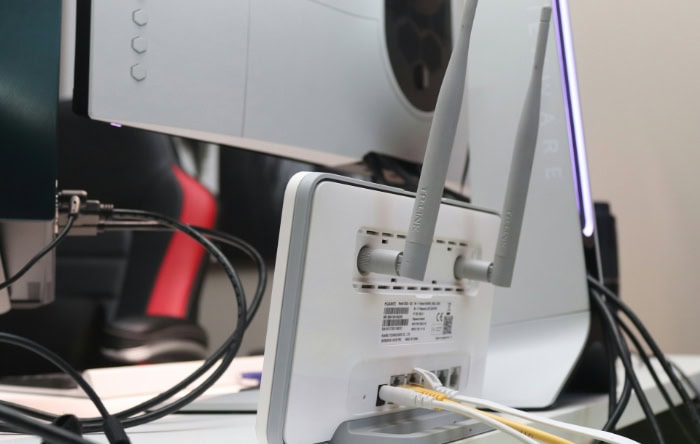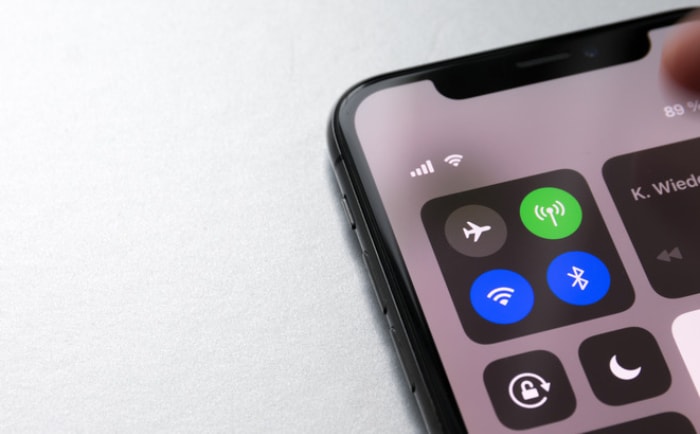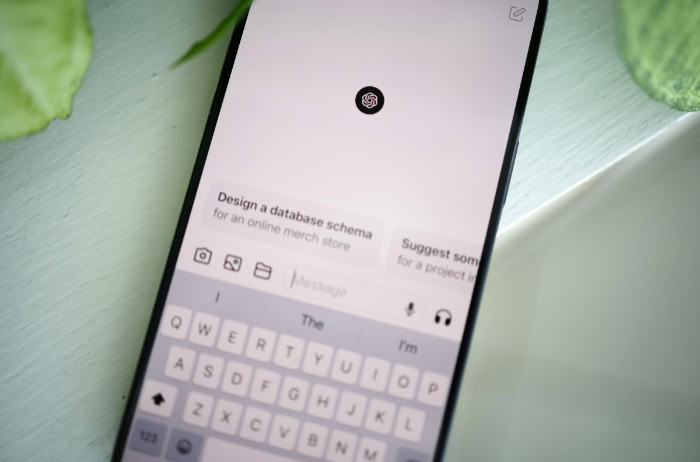What Is An IP Address? Your Digital ID Explained

Every second, billions of data packets travel across the globe to land exactly where they are intended. This massive operation functions much like a global postal system where every single message requires a precise destination to avoid getting lost in the noise.
This destination is defined by the IP address. Short for Internet Protocol address, this unique string of numbers identifies every device connected to a network.
It ensures that when you click a link, the website loads on your screen rather than on your neighbor's tablet. While these strings of numbers might look like random code, they serve a critical function for your daily browsing.
Anatomy of an IP Address
Most people see an IP address as a random string of numbers, but every digit serves a specific function in routing data. These strings act as the digital coordinates that allow devices to locate one another across the vast global network.
While they may look arbitrary, the specific arrangement of numbers defines exactly where a device sits within the internet's infrastructure.
Decoding the Numbers
The most recognizable version of an IP address is technically called IPv4. It appears as four sets of numbers separated by periods, such as 192.168.1.1.
Each of these four sections is known as an octet because it represents eight bits of data in binary code. In the decimal format humans read, each octet can range from 0 to 255.
The entire string contains 32 bits of information, which allows for approximately 4.3 billion unique combinations. This specific format provides the foundational logic for how most legacy internet traffic is categorized and delivered.
Network ID Versus Host ID
An IP address functions as two separate identifiers combined into a single string. One part is the Network ID and the other is the Host ID.
You can view this structure like a physical home address. The Network ID acts as the street name. It tells the internet which neighborhood or specific network the device belongs to.
The Host ID acts as the specific house number on that street. It identifies the individual laptop, smartphone, or printer on that network.
A subnet mask, which usually accompanies the IP address in settings menus, tells the computer exactly where the Network ID ends and the Host ID begins. This distinction ensures traffic arrives at the right router before the router sends it to the correct device.
The Shift to IPv6
The internet has eventually outgrown the 4.3 billion addresses provided by the old IPv4 standard. Engineers developed a new standard called IPv6 to solve this shortage.
These addresses look drastically different from their predecessors. They are much longer and use a hexadecimal format, meaning they include both numbers and letters from A to F.
A typical IPv6 address usually contains eight groups of four hexadecimal digits separated by colons. This expanded format creates a virtually infinite number of unique addresses.
It ensures that every smart watch, refrigerator, and phone can have its own permanent spot on the internet without ever running out of space.
How IP Addresses Route Traffic

An IP address serves no purpose if it remains static. Its real value emerges when data needs to move from one point to another.
Every time a user clicks a link or sends an email, a complex series of exchanges occurs in the background to ensure that specific request reaches its destination and returns with the correct information. The routing process relies entirely on the precision of these numerical addresses to guide information through the tangled web of global servers and local networks.
The Digital Handshake
When a computer attempts to access a website, it sends out a packet of data containing a request. The packet acts like an envelope that lists two crucial pieces of information: the destination IP address of the website's server and the source IP address of the computer sending the request.
Internet infrastructure uses the destination address to guide the request to the right server. Once the server receives the message, it looks at the return address to send the requested webpage back.
Without this return address, the server would have the data but no idea where to send it. The entire exchange happens in milliseconds, creating a continuous loop of requests and responses that allows for seamless browsing.
The Role of Routers
Routers function as the primary traffic controllers for home and business networks. A typical home internet connection usually gets assigned only one public IP address by the service provider.
The router stands at the edge of the network and holds this single public ID. Inside the home, however, the router assigns different local addresses to the phone, laptop, and smart TV.
When a device inside the house asks for data from the internet, the router takes that request, stamps it with the public address, and forwards it. When the reply comes back, the router remembers which internal device asked for it and directs the traffic accordingly.
Such a process allows dozens of gadgets to browse simultaneously using just one connection to the outside internet.
Dynamic Allocation with DHCP
Most devices do not have a permanent IP address stamped onto their hardware. Instead, they rely on a system called Dynamic Host Configuration Protocol, or DHCP.
When a user walks into a coffee shop and connects to Wi-Fi, the network's DHCP server instantly looks for an available address in its pool and assigns it to that specific device. This assignment is temporary and often referred to as a “lease.”
If the device leaves the network or restarts, it gives up that address, which then goes back into the pool for another user. The recycling system prevents network administrators from having to manually configure a specific number for every single phone or tablet that ever joins the network.
Types of IP Addresses
Categorizing IP addresses requires looking at two main factors: scope and permanence. Some addresses function like public billboards visible to anyone on the web, while others operate strictly within the confines of a private home or office.
Additionally, the duration an address remains assigned to a specific device varies significantly based on the user's needs. Network administrators and service providers use these different classifications to manage traffic efficiently and conserve the limited supply of available numbers.
Public Versus Private Addresses
The primary distinction in networking lies between the address the internet sees and the address local devices use to communicate. An Internet Service Provider assigns a public IP address to the home's main router.
This string of numbers identifies the entire household to the rest of the global internet, much like a street address identifies a building. Any website visited sees only this public-facing ID.
Behind the router, however, a completely different system operates. The router assigns private IP addresses to every smartphone, laptop, and smart speaker connected to the Wi-Fi.
These typically start with numbers like 192.168.x.x. Private addresses allow devices to send files to a local printer or stream movies from a media server without exposing those internal connections to the outside world. Traffic from the open internet cannot access these private addresses directly, which adds a layer of security to the home network.
Static Versus Dynamic Addresses
Permanence defines the second major category of IP addresses. Most residential internet connections utilize dynamic IP addresses.
Service providers pull these from a rotating pool and assign them temporarily. A home might have one address this week and a different one next week.
This flexibility allows providers to manage their resources without needing a dedicated number for every occasional user. For general browsing and streaming, a changing address causes no interruptions.
Static IP addresses, in contrast, act as permanent fixtures. Once assigned, they never change.
Businesses and websites hosting their own servers require this stability so external users can reliably connect to them. If a website's address changed every few days, visitors would constantly encounter connection errors.
While essential for hosting services, static addresses typically cost more and require manual configuration, making them unnecessary for the average consumer.
Shared IP Addresses and NAT
The shortage of available IPv4 addresses forced engineers to develop clever ways to share resources. Network Address Translation, commonly known as NAT, allows an entire household or office to operate under a single public IP address.
When multiple devices browse the internet simultaneously, the router acts as an agent for all of them. It takes requests from the various private addresses inside the network and sends them out using the one public address.
When the data returns, the router checks its records to determine which internal device requested the information. NAT effectively masks the specific number of devices on a network and ensures that thousands of individual gadgets do not consume thousands of public IP addresses.
Privacy, Security, and Geolocation

Every connection leaves a trace. While IP addresses are technical necessities for routing data, they also function as digital markers that can expose information about a user's physical whereabouts and online habits.
Privacy advocates and security experts often focus on how this string of numbers connects a virtual identity to a real-world location.
What Your IP Reveals
Many people fear that an IP address acts like a GPS tracker pointing directly to their front door, but the reality is far less precise. Generally, an IP address identifies the Internet Service Provider and a broad geographic area, such as a city or zip code region.
It functions more like a local area code than a specific street address. While law enforcement agencies can obtain legal warrants to force an ISP to reveal the exact subscriber associated with an IP at a specific time, a random website or individual hacker cannot simply look at the numbers and determine a user's name or home address.
The data reveals where the internet connection enters the regional network, not necessarily where the computer actually sits.
Tracking and Targeting
Online entities utilize IP data to build comprehensive profiles of user behavior. Advertisers analyze the location data associated with an IP to serve hyper-local ads, ensuring that a user in London sees promotions for UK services rather than products available only in New York.
Streaming services and content providers also rely on this geographic marker to enforce regional licensing restrictions, often blocking access to movies or shows not authorized for viewing in certain countries. Over time, this data contributes to a persistent profile that allows companies to track browsing habits across multiple sites.
They create a detailed picture of consumer interests and demographics without ever asking for a specific name or login.
Masking Your Identity
Users who wish to obscure their digital footprint often turn to tools like Virtual Private Networks (VPNs) or proxies. These services act as intermediaries that stand between the user's device and the open internet.
When a user connects through a VPN, their internet traffic routes through a remote server owned by the VPN provider before reaching its final destination. The website receiving the request sees only the IP address of the VPN server, not the user's actual home connection.
By effectively borrowing an address from a different location, users can bypass regional censorship, avoid targeted tracking, and encrypt their data to prevent local networks from monitoring their activity.
Practical Management and Troubleshooting
Network issues often manifest as confusing error messages, but the root cause frequently traces back to a simple IP address configuration error. Knowing how to identify the specific address assigned to a device and recognizing when that assignment has failed allows users to resolve connection problems without waiting for technical support.
Locating Your Address
Finding an IP address depends entirely on which specific identifier is needed. To see the public address that the outside world sees, the process remains incredibly straightforward.
Open any standard web browser and type “what is my IP” into a search engine. The results page will typically display the public-facing number at the very top.
Finding the private, local address requires looking inside the device's internal system preferences. On a computer or smartphone, navigating to the Wi-Fi or Network settings menu usually reveals a “Details” or “Status” section.
Here, the local IP (often starting with 192.168) is listed alongside other technical details like the subnet mask and router gateway.
Troubleshooting IP Conflicts
An IP conflict occurs when two separate devices on the same network attempt to claim the exact same numerical identifier. The router becomes confused because it cannot determine which device should receive the incoming data, causing both devices to lose connectivity or behave erratically.
This situation often arises when a device wakes up from sleep mode and tries to reclaim an old address that the router has already assigned to a different gadget. The most effective solution involves restarting the router. Rebooting the hardware clears the temporary memory and forces every connected device to request a new, unique address, effectively resolving the duplication error.
Resetting Connectivity
Devices sometimes hold onto an outdated or corrupted address configuration that prevents them from accessing the internet. In these instances, the connection might appear active in the settings, but no websites will load.
The technical solution is to “release and renew” the IP address. This process commands the device to drop its current identification and explicitly ask the router for a fresh assignment.
While computer users can execute this via specific command-line prompts, toggling the Wi-Fi connection off and then back on achieves a similar result for most mobile devices. This action wipes the slate clean and establishes a new handshake with the network infrastructure, often bypassing the glitch that caused the initial dropout.
Conclusion
An IP address serves as the fundamental identity card for any device operating online, enabling the massive, invisible exchange of data that powers the modern internet. Without these unique numerical strings, the complex web of global communication would collapse into chaos, leaving messages with no destination and servers with no way to respond.
While the technical details of subnets and routing protocols may seem abstract, grasping the basic function of these addresses provides practical benefits for the average user. It transforms a confusing string of numbers into a manageable tool for troubleshooting connection errors, configuring home networks, and securing personal privacy.
Taking control of this digital footprint ensures a more stable, secure, and efficient online experience.


